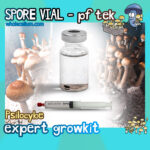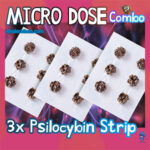Bicycle Day is an annual celebration that honors the first ever intentional ingestion of LSD by the man who discovered it — Swiss chemist Albert Hofmann. This fateful day fell on April 19th, 1943 and kick-started a field of study and research, as well as societal and cultural exploration, that continues to this day.
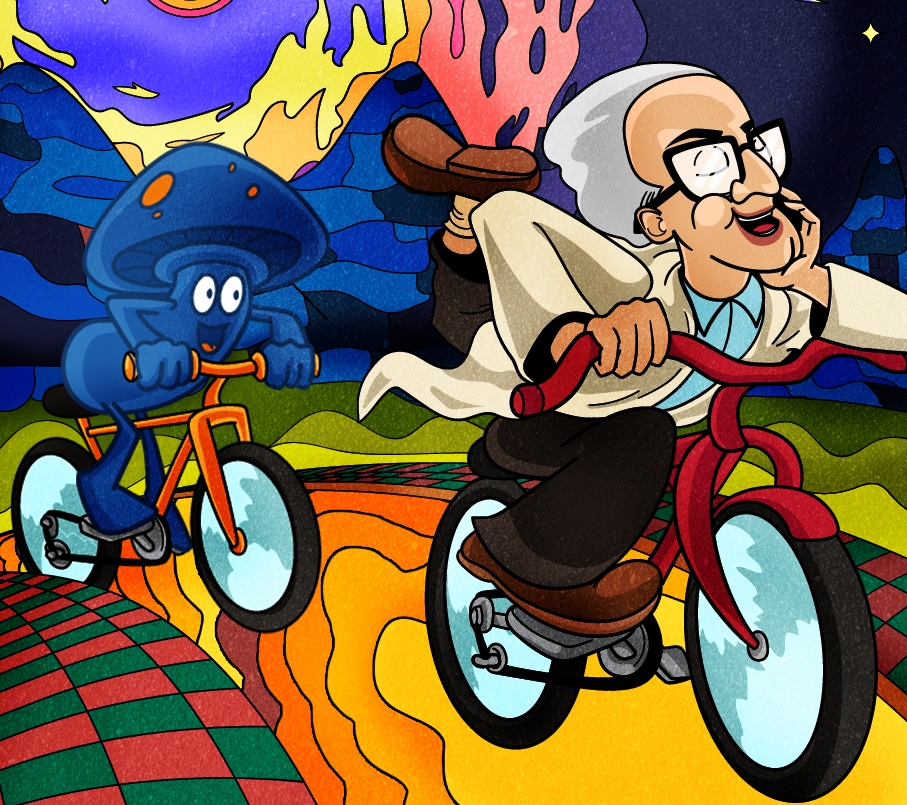
Who was Albert Hofmann?
Albert Hofmann was a Swiss chemist, who is best known as the ‘father’ of lysergic acid diethylamide, which itself is best known as LSD. He carried out groundbreaking work into the properties of LSD as well as other psychedelics, such as psilocybin from magic mushrooms. His research advanced the understanding of human consciousness and impacted the fields of neuroscience, pharmacology, and psychology. It was also the catalyst for worldwide interest in psychedelics.
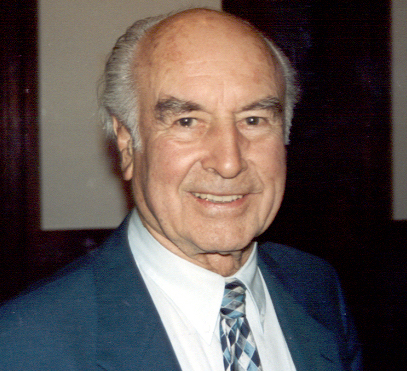
What is LSD?
LSD, or lysergic acid diethylamide, is a psychedelic substance synthesized from a fungus called ergot. It is renowned for its ability to cause profound changes in perception, thought patterns and mood. It is categorized as a hallucinogen due to the visual effects it can induce. However, these effects can vary based on dosage, setting, and the individual user.
So What’s the Deal With Ergot?
Ergot is a type of fungus that grows on grains such as rye. Its effects, both medicinal and toxic, have been recorded throughout history. Ergot alkaloids harbor potent psychoactive and vasoconstrictive properties, which is what has caused the fungus to be both utilized and feared since time immemorial. These compounds occur naturally within the fungus.
It’s first recorded use was during the Middle Ages, but there are many hints of its use in earlier history, such as the suggestion that ergot was part of the secret psychoactive concoction kykeon that the Ancient Greeks drank during the Eleusinian Mysteries. However, more often than not, ergot was accidentally ingested, as it grew on grains used to make bread — the staple food throughout much of human history. This could cause symptoms ranging from nausea, to gangrene, to death.
Albert Hofmann was busy studying the medicinal potential of these ergot alkaloids when he first synthesized LSD in 1938. He had been tasked by Sandoz Laboratories in Switzerland to develop a stimulant for respiration and circulation. Although on first discovery LSD was not considered significant, Hofmann felt there was something special about the compound, which encouraged him to continue his research. This led to the now-celebrated events of Bicycle Day.
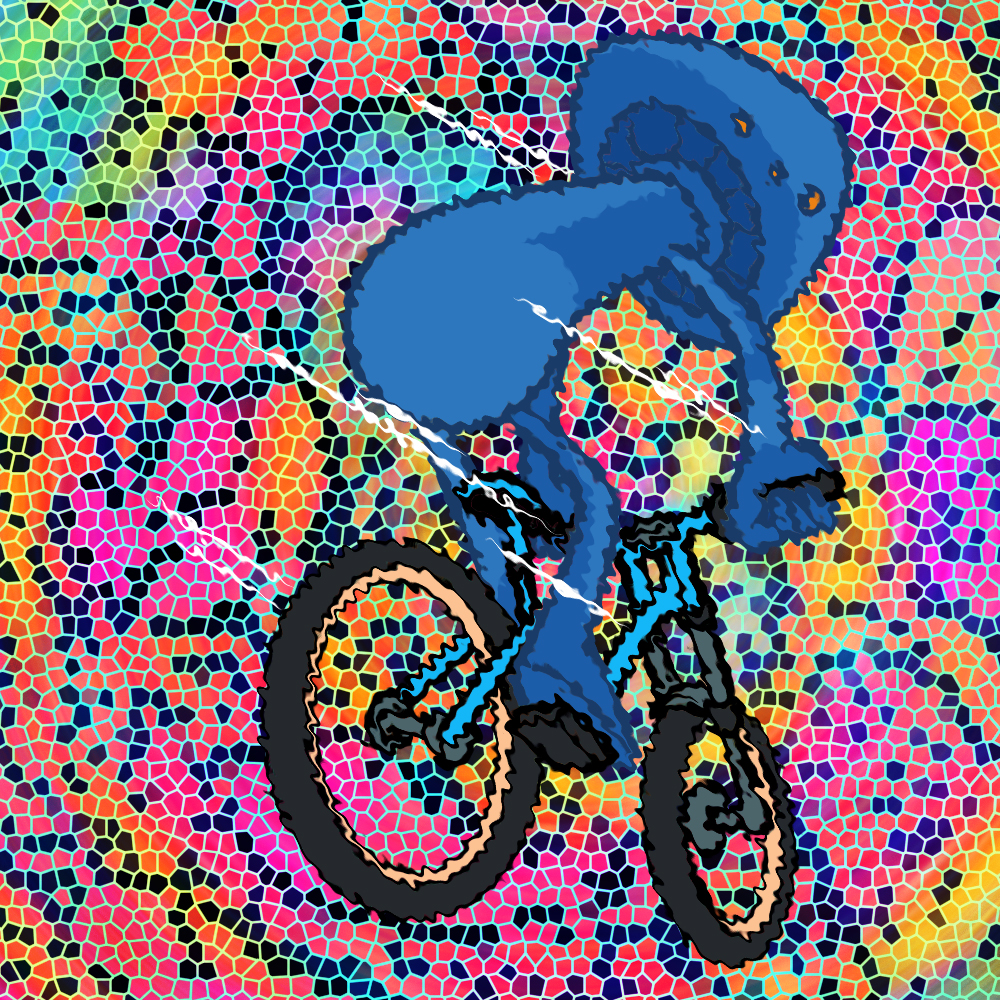
What Are the Effects of LSD?
LSD users often experience changes in perception of time, space, and logic, as well as visual and auditory hallucinations. They also experience heightened emotional sensitivity and introspection, sometimes leading to spiritual revelation. The effects of LSD, or the ‘trip’, can last from 6 to 12 hours, depending on various factors, such as dosage. LSD became synonymous with the counterculture movement of the 1960s and 1970s, its reach extending to music, fashion, art, and political and societal change. After being outlawed for many years, research into its benefits is back on track with studies showing that it has the potential to treat a wide-range of mental health conditions. These include depression, PTSD and anxiety.
Why ‘Bicycle Day’?
So, why Bicycle Day? Why not ‘LSD Day’? Well, with LSD up until pretty recently being considered dangerous, not to mention illegal, that title probably wouldn’t have flown. So, Bicycle Day cleverly refers to Albert Hofmann’s iconic bike ride which he took after ingesting LSD on April 19th, 1943. It started off as a bit of a codename — if you know then you know. It is not to be confused with World Bicycle Day, which falls on June 3rd every year.
But now, how about this infamous bicycle ride?
So, on April 19th, 1943 Hofmann decided to ingest 250 micrograms of LSD, having accidentally felt the effects a few days earlier after absorbing some of the substance through his skin. April 19th is observed, rather than the date a few days earlier (April 16th), as it was the first time LSD was taken a on purpose.
After ingesting the LSD (and not yet knowing that 250 micrograms was a very high dose!) Hofmann began to feel the effects quickly — within 40 minutes. Thus began an unprecedented psychedelic journey into his mind and psyche, making him the first to feel the profound effects that would change the world forever.
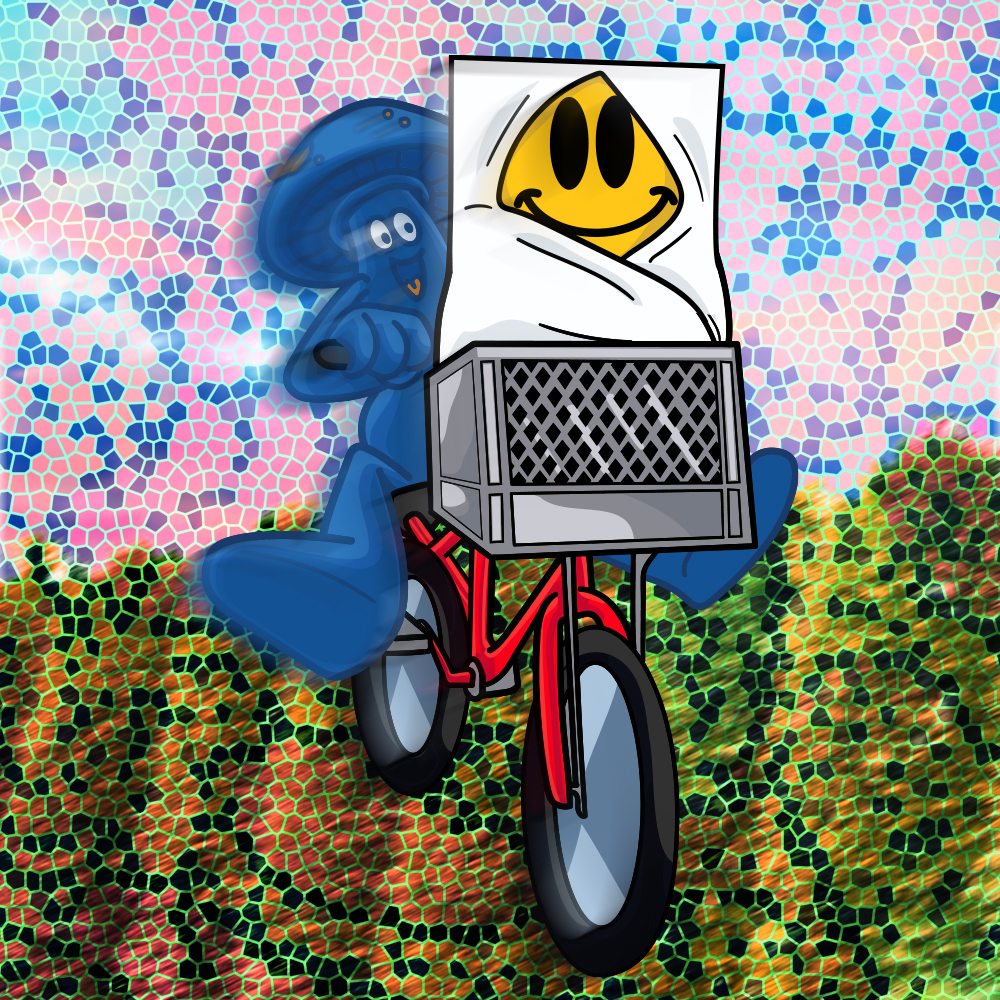
Later he would describe experiencing extreme visual distortions, intense colors, and high levels of anxiety. By this point he knew he needed to return home as soon as possible. As it was still wartime, no cars were allowed on the road. So the humble bicycle was his only option. Accompanied by his lab assistant, Hofmann hopped onto his bike, and Bicycle Day began!
Hofmann’s Trip
Throughout the ride, Hofmann experienced intense psychedelic effects. HIs perception of the world was significantly altered, as though his consciousness had been separated from his body. He reported feeling as if he was floating above the ground. Everything he saw was in flux, with colors and shapes moving and flickering before him.
Despite this sensorial overload, Hofmann managed to get home, encouraged by the simple familiarity of riding his bike. The journey took around two hours, and once home, Hofmann sought help from a doctor. Being the first ever LSD-tripper he could have no idea whether what he was feeling was a threat to his life, or just a hallucination. After being reassured that his vitals were normal (apart from enlarged pupils and his apparent confusion) he was able to relax and lean into what he was experiencing.
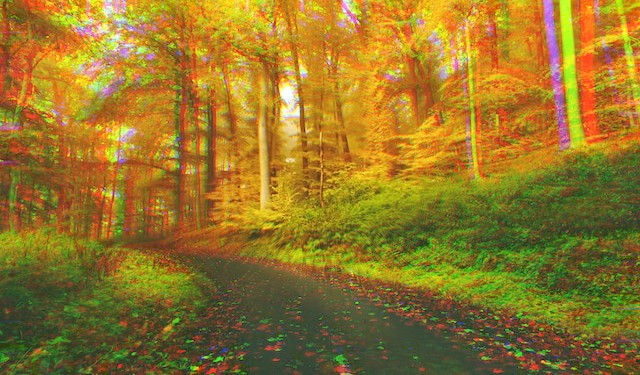
It was here that Hofmann began to realize LSD’s potential as a tool to explore consciousness and enhance the human experience. He felt a deep sense of connection to the world, and a profound gratitude and appreciation for his existence. He believed this wonder could be used for great things. In an interview by Marlene Dobkin de Rios in 1996 Hofmann explained;
“Through my LSD experience and my new picture of reality, I became aware of the wonder of creation, the magnificence of nature, and the animal and plant kingdom. I became very sensitive to what will happen to all this and all of us.”
Hofmann’s courageous exploration into the unknown exists in the great lineage of scientists and researchers experimenting on themselves. His experience would lay the foundation for a new era of study, impacting all areas of culture.
When was Bicycle Day First Celebrated?
Bicycle Day was initiated in 1985 by a professor at Northern Illinois University, Dr. Thomas B. Roberts. Beginning as a grassroots event, it has over the years grown in popularity. It has become a haven for a wide cross-section of people interested in psychedelics, the exploration of the mind, drug policy reform, and more. Today celebrations take place all around the world.
How Can You Celebrate Bicycle Day?
Bicycle Day is a time to celebrate the legacy of Albert Hofmann, as well as the rich history and exciting future of LSD, and psychedelics in general. This can take many forms — from attending parties to learning about the history of psychedelics. Here are some ideas for you!
Attend a Bicycle Day Event
Look for Bicycle Day events in your local area. Many cities and communities host them, and they can range from group bicycle rides, to panel discussions, talks, art installations or exhibitions, to film screenings. Going to these events gives you the opportunity to meet a community of similarly psychedelically-minded people. It also raises wider awareness that psychedelics are a growing area of interest for many people, and the importance of continuing the research into them.
Throw Your Own Bicycle Day Event
Get some friends round and have your own little shin-dig to celebrate Bicycle Day. You could watch a psychedelic movie, or documentary about the history of LSD, or magic mushrooms. You could throw a little dance party to some classic psychedelic music. Make sure you include some of the original Woodstock line-up in your playlist!

Go on a Bike Ride or Have a Picnic
Do what Hofmann couldn’t and go on an enjoyable bike ride. Ideally somewhere with some pretty scenery and nature — it’s lucky that Bicycle Day falls just as spring is getting into full swing! Pack a picnic and cycle to a beauty spot. Eat your favorite foods — you certainly don’t need to guzzle milk like Hofmann reportedly did during his first Bicycle Day trip! Just enjoy the nature around you. As Hofmann implored;
“Go to the meadows, go to the garden, go to the woods. Open your eyes!”

Go On a Psychedelic Trip
Some people choose to do as Hofmann did by going on a psychedelic trip of their own. What better way could there be? Magic mushrooms and truffles are all-natural and have similar psychedelic effects to LSD. Follow our Trip Guide for everything you need to know.
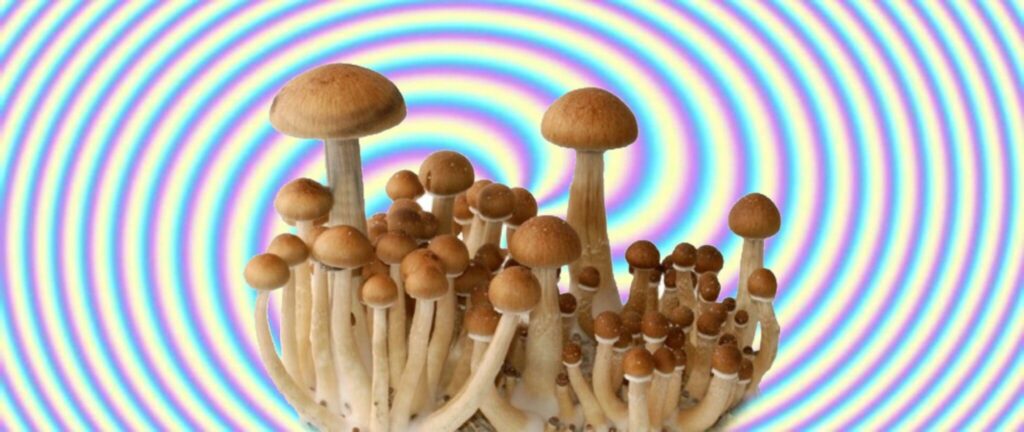
Learn Something New
Psychedelics open the mind and keep us curious. Why not spend the day learning about the past and future of psychedelic study? One of the best ways to combat misinformation about psychedelics is through education. Research the science, history and benefits of psychedelics and share it with your friends and family. Our blog archive is not a bad place to start!
Support Psychedelic Research and Advocacy
Why not donate to a non-profit organization such as the Beckley Foundation or the Multidisciplinary Association for Psychedelic Studies (MAPS)? This way you are directly supporting the advancement of psychedelic research, and the positive changes it can bring to the world.
Happy Bicycle Day!
This Bicycle Day, whether you trip, cycle, or simply marvel at the ingenuity of human curiosity, have a wonderful time!


